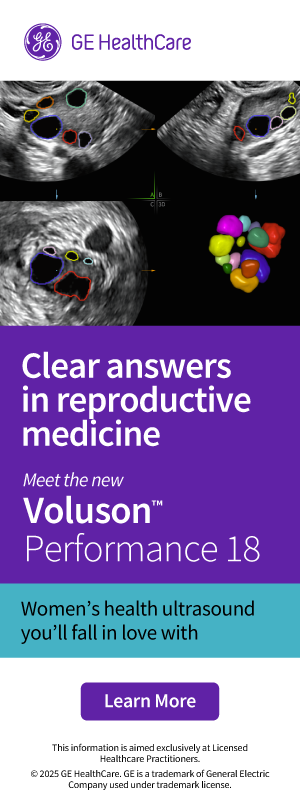Blood loss in the immediate postpartum period is associated with significant morbidity and mortality.1 As 40% of postpartum haemorrhage (PPH) occurs in low-risk women, every woman giving birth is at risk.2 The amount of loss that constitutes an excessive blood loss is one of continued debate. The World Health Organization (WHO) definition is frequently cited: >500mL post vaginal birth and >1000mL post caesarean section.3 Consensus for this definition arose in the 1960s; however, there is little enduring evidence supporting 500mL as a threshold for PPH-related morbidity.4 5
The American College of Obstetricians and Gynaecologists (ACOG) rationalised their definition of PPH to be ‘blood loss greater than or equal to 1000mL or blood loss accompanied by signs or symptoms of hypovolemia’.6 Despite a lack of evidence, Australian guidelines (including RANZCOG) continue to use the 500mL definition.
Statewide Guidelines – a comparison
There is comparatively little randomised control trial (RCT) evidence to guide the management of PPH. Hence most interventions are guided by best practice rather than high-quality evidence.7 This may partially account for variation in management guidelines between states.
Third stage prophylaxis – to carbetocin or not to carbetocin?
There is, however, good evidence for active management of the third stage of labour including use of a prophylactic uterotonic. The WHO recommends that all women giving birth should receive a prophylactic uterotonic agent for the prevention of PPH and specifies oxytocin 10IU IM as the drug of choice.8 This recommendation is echoed in the 2014 RANZCOG and 2016 Green Top Guidelines, which also recommend oxytocin 10IU IM for prophylaxis in the third stage of labour for women without risk factors for PPH who deliver vaginally.9 10 The Greentop Guideline goes on to state that Syntometrine® (oxytocin 5IU + ergometrine 500μg IM) may be used in the absence of hypertension, in women at increased risk of haemorrhage, as it reduces the risk of minor PPH.11
A 2018 Cochrane Systematic Review (meta-analysis of 196 RCTs, >135 000 participants) showed the use of oxytocin plus misoprostol, oxytocin plus ergometrine, or carbetocin alone, reduced the use of additional uterotonic drugs and blood transfusion compared with oxytocin alone, but not necessarily overall rate of PPH. Subgroup analyses did not reveal important subgroup differences for patients undergoing vaginal versus caesarean birth or for patients at high versus low risk for PPH.12
Queensland Guidelines recommend routine use of oxytocin in preference to Syntometrine® or carbetocin for low-risk births. In women at risk for PPH who have a vaginal birth, carbetocin may be considered first line. In women at risk for PPH who have an elective or emergency caesarean section, carbetocin may be considered under epidural or spinal anaesthesia but is not recommended in women having a general anaesthetic.13
Victorian guidelines also refer to carbetocin, recommending its use for all births (not just caesarean sections) in contexts where its cost is comparable to other effective uterotonics. Oxytocin is still recommended for the prevention of PPH for all births. Syntometrine® may be used but should be avoided for women with hypertension.14
New South Wales and South Australia both recommend routine use of prophylactic oxytocin for management of third stage, regardless of risk factors;15 though South Australia’s guideline considers alternate prophylaxis with Syntometrine®. Western Australia also recommends routine oxytocin for women who birth vaginally without risk factors, and to consider Syntometrine® in women who are high risk without contraindications.16 Neither NSW, SA nor WA reference carbetocin in their guidelines.17 18 19
Oxytocin: is 30 the new 40?
Even the most ubiquitous oxytocic doses still vary state to state. The RANZCOG guideline suggests PR misoprostol administration with dosage up to 1000μg.20 State guidelines for misoprostol prescribing ranges from 400–1000μg and include buccal/sublingual and rectal routes.
An oxytocin infusion is also used to maintain uterine tone once bleeding is controlled, commonly prescribed as oxytocin 40IU in 1L crystalloid infused over 4 hours (10IU/hr). This contrasts with the lower dose oxytocin infusion used for induction of labour, a 10IU in 1L crystalloid titrated infusion used by most states.
Queensland, however, recommends an oxytocin 30IU in 500mL infusion for both induction of labour and management of PPH. Having previously used the standard 40U infusion for PPH management, this change was in response to the state’s updated guideline for induction of labour. An oxytocin infusion of 30IU in 500mL crystalloid is titrated for induction of labour and the same concentration is infused at 167mL/hr (10IU/hr) for management of PPH. This change aimed to simplify pharmacological management and prevent errors.21 In these authors’ Queensland clinical experience, simplified prescribing has certainly streamlined emergency management.
TXA – will it save the day?
In response to evidence from the WOMAN trial, the WHO now strongly recommends the addition of IV tranexamic acid (within three hours of birth) to management for women where vaginal birth or caesarean section is complicated by PPH, regardless of cause.22 23 The majority of the state guidelines include this recommendation.
Is measuring EBL a worthy task?
The WHO PPH Guidelines contains thirty-three recommendations for the prevention and management of PPH, but only one recommendation for accurate diagnosis.24 Delay in diagnosis is thought to have a direct correlation to the severity of bleeding and is a common finding in cases of severe morbidity and mortality. A major cause for delay in diagnosis is inaccurate clinician estimation of blood loss.25 Evaluation for clinical signs and symptoms of hypovolaemia are important in the assessment of PPH; however, due to the physiological adaptations of pregnancy, these become far less sensitive and therefore other clinical practices for estimating loss are required.26
Visual estimation – your guess is as good as mine
Visual estimation remains the primary method of determining blood loss, particularly following vaginal birth. It is well established that visual estimation is both inaccurate and subjective.27 Visual tools for comparison of volume have been developed to improve estimation; however, these have not been shown to correlate with consistent clinical improvement.28 Interestingly, visual estimation accuracy does not appear to improve with the speciality of the health care provider or their clinical experience.29
Quantitative measures – should the scales weigh in?
Quantitative measurement techniques are consistently shown to improve accuracy of blood loss assessment and include:
- Gravimetric assessment – measurement of total weight of bloody materials, subtracting the known dry weight of same materials to achieve total blood loss in mL
- Volumetric assessment – the use of calibrated measurement containers/V-drapes with calibrated pockets
A prospective cohort study of 150 women compared visual estimation to gravimetric assessment and found that visual estimation is associated with an error of 30%.30 Calibrated bags have also demonstrated accurate assessment of blood loss in clinical practice and simulations.31 32 The largest randomised trial to compare calibrated bags to visual assessment included 25 381 vaginal deliveries in 13 European countries.33 Severe PPH occurred in 1.71% of births in the intervention group and 2.06% in the control group and the difference was not statistically significant. The authors explained this by suggesting that a more accurate assessment of postpartum blood loss is not itself sufficient to change behaviours of caregivers and improve the management of PPH.34
Correlation with clinical outcomes – do the ends justify the means?
Quantitative measurement is more accurate than visual estimation, but whether this correlates with improved maternal outcomes has not been demonstrated. A 2018 Cochrane Review found no differences when comparing subjective and objective quantification of blood loss and clinical outcomes such as use of uterotonics and need for blood transfusion.35 Most studies aiming to improve recognition and response to PPH have focussed on improving volume estimates. Qualitative data in this area has found that the numerical quantification of blood loss is often retrospective and that factors that affect initial decision making in PPH include the nature and rate of blood loss and the clinical condition of the patient.36 37 This may explain why improved accuracy of measurement alone is not clearly associated with improved clinical outcomes.
Areas for improvement – surely there’s a bundle for that?
The US has initiated several bundles to attempt to improve PPH prevention, diagnosis and management at several levels. The largest of these is the California Maternal Quality Care Collaborative state-wide haemorrhage quality improvement initiative that compares outcomes before and after the implementation of an obstetric haemorrhage bundle (n=99) versus comparison hospitals (n=48).38 39 There was a 20.8% reduction in severe maternal morbidity in the collaborative hospitals compared to a 1.2% reduction in the comparison hospitals. These results have been replicated in two studies from single institutions, demonstrating a significant reduction in adverse outcomes relating to PPH following implementation of an obstetric haemorrhage bundle.40 41
Standardised evidence-based clinical guidelines across states may not be practical, but similarities are stronger than the differences. Accurate quantification of blood loss remains a worthy task in minimising adverse maternal outcomes from PPH. Bundled healthcare strategies include the use of quantitative measures over visual estimation for improved accuracy. There continues to be ample room for improvement, even in our most common obstetric emergency.
Our feature articles represent the views of our authors and do not necessarily represent the views of the Royal Australian and New Zealand College of Obstetricians and Gynaecologists (RANZCOG), who publish O&G Magazine. While we make every effort to ensure that the information we share is accurate, we welcome any comments, suggestions or correction of errors in our comments section below, or by emailing the editor at [email protected].
Further reading
- Driessen M, Bouvier-Colle MH, Dupont C, et al. Postpartum hemorrhage resulting from uterine atony after vaginal delivery: factors associated with severity. Obstetrics and Gynecology. 2011;117:21–31.
- Hancock A, Weeks AD, Lavender DT. Is accurate and reliable blood loss estimation the ‘crucial step’ in early detection of postpartum haemorrhage: an integrative review of the literature. BMC Pregnancy Childbirth.2015;15:230.
- Einerson BD, Miller ES, Grobman WA. Does a postpartum hemorrhage patient safety program result in sustained changes in management and outcomes? Am J Obstet Gynecol. 2015;212:140–4.e1.
References
- World Health Organization (WHO). Recommendations on Prevention and Treatment of Postpartum Haemorrhage. Geneva: WHO; 2012.
- Main EK, Goffman D, Scavone BM, et al. National Partnership for Maternal Safety: consensus bundle on obstetric hemorrhage. National Partnership for Maternal Safety, Council on Patient Safety in Women’s Health Care [published erratum appears in Obstet Gynecol 2015;126:1111]. Obstet Gynecol 2015;126:155–62.
- World Health Organization (WHO). Recommendations on Prevention and Treatment of Postpartum Haemorrhage. Geneva: WHO; 2012.
- Blum J, Winikoff B, Raghavan S, et al. Treatment of post-partum haemorrhage with sublingual misoprostol versus oxytocin in women receiving prophylactic oxytocin: a double-blind, randomised, non-inferiority trial. Lancet. 2010;375(9710):217–23.
- Menard MK, Main EK, Currigan SM. Executive summary of the reVITALize initiative: standardizing obstetric data definitions. Obstet Gynecol. 2014;124(1):150–3.
- Menard MK, Main EK, Currigan SM. Executive summary of the reVITALize initiative: standardizing obstetric data definitions. Obstet Gynecol. 2014;124(1):150–3.
- Mavrides E, Allard S, Chandraharan E, et al. on behalf of the Royal College of Obstetricians and Gynaecologists. Prevention and management of postpartum haemorrhage. BJOG. 2016;124:e106–e149.
- World Health Organization (WHO). Recommendations on Prevention and Treatment of Postpartum Haemorrhage. Geneva: WHO; 2012.
- RANZCOG Guideline. Management of Postpartum Haemorrhage (PPH) (C-Obs 43) Last review 2017. https://ranzcog.edu.au/statements-guidelines/obstetrics/postpartum-haemorrhage,-management-of-(c-obs-43)
- Mavrides E, Allard S, Chandraharan E, et al. on behalf of the Royal College of Obstetricians and Gynaecologists. Prevention and management of postpartum haemorrhage. BJOG. 2016;124:e106–e149.
- Mavrides E, Allard S, Chandraharan E, et al. on behalf of the Royal College of Obstetricians and Gynaecologists. Prevention and management of postpartum haemorrhage. BJOG. 2016;124:e106–e149.
- Gallos ID, Papadopoulou A, Man R, et al. Uterotonic agents for preventing postpartum haemorrhage: a network meta-analysis. Cochrane Database Syst Rev. 2018 Dec 19;12(12):CD011689.
- Natrella M, Di Naro E, Loverro M, et al. The more you lose the more you miss: accuracy of postpartum blood loss visual estimation. A systematic review of the literature. J Matern Fetal Neonatal Med. 2018;31:106–15.
- Safer Care Victoria. Clinical Guideline. Postpartum haemorrhage (PPH) – prevention, assessment and management. Last updated Nov 2021.
- New South Wales Health Clinical Guideline. Postpartum Haemorrhage. GL2021_017. Last updated Oct 2021.
- WACHS HealthPoint Policies. WACHS Primary Postpartum Haemorrhage Guideline. Last updated July 2019.
- Safer Care Victoria. Clinical Guideline. Postpartum haemorrhage (PPH) – prevention, assessment and management. Last updated Nov 2021.
- South Australian Perinatal Practice Guidelines. Postpartum Haemorrhage. ISBN number: 978-1-74243-062-1. Last revised 2013.
- WACHS HealthPoint Policies. WACHS Primary Postpartum Haemorrhage Guideline. Last updated July 2019.
- RANZCOG Guideline. Management of Postpartum Haemorrhage (PPH) (C-Obs 43) Last review 2017. https://ranzcog.edu.au/statements-guidelines/obstetrics/postpartum-haemorrhage,-management-of-(c-obs-43)
- Queensland Clinical Guidelines. Postpartum haemorrhage Guideline No. MN18.1- V10-R23 Queensland Health.2021.
- World Health Organization (WHO). Recommendations on Prevention and Treatment of Postpartum Haemorrhage. Geneva: WHO; 2012.
- WOMAN Trial Collaborators. Effect of early tranexamic acid administration on mortality, hysterectomy, and other morbidities in women with post-partum haemorrhage (WOMAN): an international, randomised, double-blind, placebo-controlled trial. Lancet. 2017;389(10084):2105-16.
- World Health Organization (WHO). Recommendations on Prevention and Treatment of Postpartum Haemorrhage. Geneva: WHO; 2012.
- WOMAN Trial Collaborators. Effect of early tranexamic acid administration on mortality, hysterectomy, and other morbidities in women with post-partum haemorrhage (WOMAN): an international, randomised, double-blind, placebo-controlled trial. Lancet. 2017;389(10084):2105-16.
- Diaz V, Abalos E, Carroli G. Methods for blood loss estimation after vaginal birth. Cochrane Database of Systematic Reviews 2018, Issue 9. Art. No.: CD010980.
- WOMAN Trial Collaborators. Effect of early tranexamic acid administration on mortality, hysterectomy, and other morbidities in women with post-partum haemorrhage (WOMAN): an international, randomised, double-blind, placebo-controlled trial. Lancet. 2017;389(10084):2105-16.
- Larsson C, Saltvedt S, Wiklund I, et al. Estimation of blood loss after cesarean section and vaginal delivery has low validity with a tendency to exaggeration. Acta Obstetricia Et Gynecologica Scandinavica. 2006;85:1448–52.
- Toledo P, McCarthy RJ, Hewlett B, et al. The Accuracy of Blood Loss Estimation After Simulated Vaginal Delivery. Anesth Analg. 2007;105:1736–40.
- Andrikopoulou M, D’Alton ME. Postpartum hemorrhage: early identification challenges. Semin Perinatol 2019;43:11–7.
- Larsson C, Saltvedt S, Wiklund I, et al. Estimation of blood loss after cesarean section and vaginal delivery has low validity with a tendency to exaggeration. Acta Obstetricia Et Gynecologica Scandinavica. 2006;85:1448–52.
- Al Kadri HM, Al Anazi BK, Tamim HM. Visual estimation versus gravimetric measurement of postpartum blood loss: a prospective cohort study. Arch Gynecol Obstet 2011;283:1207–13.
- Patel A, Goudar SS, Geller SE, et al. Drape estimation vs. visual assessment for estimating postpartum hemorrhage. Int J Gynecol Obstet. 2006;93:220–4.
- Patel A, Goudar SS, Geller SE, et al. Drape estimation vs. visual assessment for estimating postpartum hemorrhage. Int J Gynecol Obstet. 2006;93:220–4.
- Zhang WH, Deneux-Tharaux C, Brocklehurst P, et al. Effect of a collector bag for measurement of postpartum blood loss after vaginal delivery: cluster randomised trial in 13 European countries. BMJ. 2010;340:c293.
- Diaz V, Abalos E, Carroli G. Methods for blood loss estimation after vaginal birth. Cochrane Database of Systematic Reviews 2018, Issue 9. Art. No.: CD010980.
- Matsuyama A, Moji K. Perception of Bleeding as a Danger Sign During Pregnancy, Delivery, and the Postpartum Period in Rural Nepal. Qual Health Res. 2008;18:196–208.
- World Health Organization (WHO). Recommendations on Prevention and Treatment of Postpartum Haemorrhage. Geneva: WHO; 2012.
- Diaz V, Abalos E, Carroli G. Methods for blood loss estimation after vaginal birth. Cochrane Database of Systematic Reviews 2018, Issue 9. Art. No.: CD010980.
- Main EK, Cape V, Abreo A, et al. Reduction of severe maternal morbidity from hemorrhage using a state perinatal quality collaborative. Am J Obstet Gynecol. 2017;216:298.e1–11.
- Shields LE, Smalarz K, Reffigee L, et al. Comprehensive maternal hemorrhage protocols improve patient safety and reduce utilization of blood products. Am J Obstet Gynecol. 2011;205:368.e1–8.







Leave a Reply